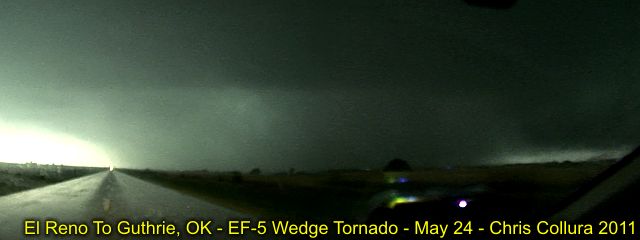The "official" EF-scale training at WDTB says that the wind speed numbers can change with time to keep damage consistent based on new research. So the EF4 being 166-200mph today could theoretically be changed to 175-210mph tomorrow. Then what do you do with the tornado that was rated EF5 because DOW ground winds were 205mph?
This underscores an issue that's been bothering me over the past week through all the hoopla surrounding the 24 May ratings.
To me, it seems ideal that we should rate tornadoes based upon a fundamental intrinsic physical attribute; namely, wind speed. Because this is not practical in this day and age, we have a host of alternatives. One option is to rate solely on the basis of damage. I had been led to believe until recently that this was the role of the EF scale. The disadvantage of this methodology is that the climatological dataset will not be at all consistent with respect to the intrinsic physical properties of tornadoes, unlike other comparable rating scales in the geosciences (Saffir-Simpson, Richter, etc.). The advantage, however, is that it *will* be consistent with respect to societal impacts of tornadoes -- along the lines of the NESIS scale developed by Kocin and Uccellinni for northeast U.S. snowstorms. Put simply, one could perform with credibility a study concerning the climatology of societally-impactful tornadoes using the database of EF ratings.
When you start to mix and match rating indicators (from the two broad categories of "damage" and "observed wind speed"), the database is not consistent with respect to much at all. I suppose using mobile radar data where available brings the dataset *slightly* closer to being
accurate with respect to wind speed, but surely not any closer to being
consistent in that regard. Clearly, this is not just a trivial, philosophical concern; in fact, the three primary supercells on 24 May are a microcosm of the issue. Based upon how their 88D signatures compared with El Reno, it's conceivable that the Chickasha and Goldsby tornadoes might well have earned EF-5 ratings on the basis of close-range mobile radar data, too, were it available. But because it isn't, they will go down in the record as being the "weaker" of the three tornadoes that day, despite the actual DI's being comparable for all three events. So it seems to me that the rating book for 24 May will be consistent neither with respect to damage
nor wind speed.
I had been pondering this for a few days, but the point rdale just made regarding the possibility of wind speed estimates changing really hit the point home for me and motivated me to speak my mind. The fact that the wind speeds corresponding to each EF rating are explicitly stated to be flexible over time implies that it is, first and foremost, a
damage scale. Therefore, I do view upgrading a rating strictly on the basis of remote sensing data to be a "contamination" of the dataset, in some sense.
To be clear, I am not specifically taking issue with NWS OUN, the QRT, or anyone involved in this conundrum. It so happens that there was non-DI damage (an oil rig, I believe) that secondarily helped to justify the upgrading of El Reno, so the concerns I laid out above are more hypothetical and apply to future events in which no physical damage whatsoever can be used in tandem with radar data.


